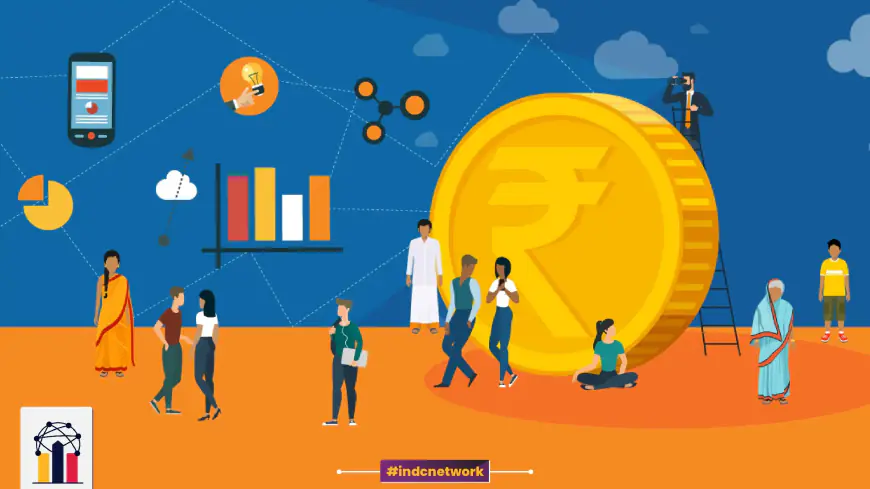In a world where economic progress often hinges on access to financial services, financial inclusion stands out as one of the most powerful forces for reducing poverty and fostering economic growth. Yet, despite its critical role, a significant portion of the global population remains excluded from the formal financial system.
Financial inclusion is not merely about opening bank accounts; it is about ensuring that individuals and businesses, regardless of their income or location, can access and use financial services such as savings, credit, insurance, and digital payments. By democratizing access to these services, financial inclusion fosters economic resilience, empowerment, and long-term sustainable development. This article delves into the transformative impact of financial inclusion, the role of technology, and the remaining obstacles in achieving a truly inclusive global financial ecosystem.
The Global Context of Financial Inclusion : According to the World Bank's Global Findex database, around 1.4 billion adults globally remain unbanked, with most of them living in developing countries. These individuals often face barriers such as lack of financial literacy, geographic isolation, high transaction costs, and limited access to technology. Women, rural communities, and small businesses are disproportionately affected by financial exclusion, exacerbating income inequality and hindering economic mobility.
Financial inclusion is more than a moral imperative; it is a prerequisite for inclusive economic growth. When individuals have access to financial services, they can invest in education, start businesses, manage risks, and build wealth. Financial inclusion enables small businesses to expand, creates jobs, and drives innovation. It is a key driver of economic stability and poverty reduction, helping societies become more resilient to economic shocks and crises.
The Core Components of Financial Inclusion : Achieving financial inclusion requires a multifaceted approach that addresses both supply-side and demand-side factors. On the supply side, financial institutions and governments must create affordable, accessible, and relevant financial products. On the demand side, individuals and businesses need to be empowered with the knowledge and tools to use these services effectively.
The core components of financial inclusion include:
- Access to Financial Services: Ensuring that all individuals and businesses can access basic financial services, such as savings accounts, loans, payment systems, and insurance, regardless of income or location.
- Affordability: Making financial services affordable, especially for low-income individuals. This involves reducing transaction costs, lowering fees, and ensuring that interest rates and other financial costs are transparent and fair.
- Financial Literacy and Education: Providing individuals with the knowledge and skills to effectively manage their finances, understand financial products, and make informed decisions.
- Digital Financial Services: Leveraging technology to offer digital payment systems, mobile banking, and online financial services, which can reach underserved populations and provide greater convenience.
- Financial Regulation and Consumer Protection: Establishing regulatory frameworks that protect consumers, promote fair practices, and encourage innovation while ensuring the safety and soundness of financial institutions.
The Role of Technology in Financial Inclusion : Technology is one of the most significant enablers of financial inclusion. Digital financial services, including mobile banking, fintech platforms, and blockchain technology, have revolutionized the way people access and use financial products. In many countries, mobile phones have become the primary tool for accessing financial services, allowing users to bypass traditional banking infrastructure.
1. Mobile Money and Payment Systems : Mobile money platforms like Kenya's M-Pesa have demonstrated the transformative power of digital financial services. M-Pesa allows users to transfer money, pay bills, and access credit through their mobile phones without needing a traditional bank account. This innovation has brought millions of previously unbanked individuals into the financial system, especially in rural and low-income communities.
Mobile payment systems also promote financial inclusion by reducing transaction costs and increasing the speed and convenience of financial transactions. By enabling cashless payments, mobile money platforms reduce the reliance on physical cash, which is often more expensive to handle and less secure.
2. Fintech and Digital Banking : Fintech (financial technology) companies are at the forefront of the financial inclusion movement, offering innovative solutions that cater to the needs of underserved populations. These companies provide digital financial services such as online lending, peer-to-peer transfers, and robo-advisors that make financial management easier and more accessible.
Digital banks, also known as neobanks, are another key player in the financial inclusion ecosystem. These banks operate entirely online, eliminating the need for physical branches. They often offer lower fees, faster services, and more user-friendly interfaces, making banking more accessible to people who live in remote areas or those with limited financial literacy.
3. Blockchain and Cryptocurrencies : Blockchain technology has the potential to further democratize financial services by offering a decentralized, transparent, and secure platform for transactions. Cryptocurrencies, built on blockchain technology, can provide an alternative to traditional currencies in regions with unstable economies or limited access to formal banking systems.
While cryptocurrencies remain controversial due to concerns about volatility and regulation, they have the potential to provide financial services to the unbanked in regions where traditional banking is either inaccessible or unreliable. Blockchain’s ability to record and verify transactions without the need for intermediaries also offers a way to reduce transaction costs and increase transparency.
Economic Impact of Financial Inclusion : Financial inclusion has wide-ranging economic benefits, extending beyond individual empowerment to broader macroeconomic growth. When people have access to financial services, they can save and invest in productive activities, contributing to economic stability and growth. For businesses, access to credit and financial management tools enables them to expand, innovate, and create jobs.
1. Poverty Reduction : One of the most direct impacts of financial inclusion is its ability to reduce poverty. By providing people with the tools to save, borrow, and invest, financial inclusion helps individuals build assets and manage risks. Microfinance institutions, for example, have been instrumental in providing small loans to low-income individuals who lack access to traditional banking services. Access to financial services also enables individuals to withstand economic shocks, such as health emergencies or natural disasters. With insurance and savings products, people can protect themselves from unforeseen events that would otherwise push them into poverty.
2. Empowering Women : Women are often disproportionately affected by financial exclusion, especially in developing countries where cultural and legal barriers limit their access to financial services. However, financial inclusion can be a powerful tool for women’s economic empowerment. By providing women with access to savings accounts, credit, and insurance, they gain the ability to invest in their businesses, increase their income, and achieve financial independence.
Numerous studies have shown that women tend to reinvest their income into their families and communities, leading to broader social and economic benefits. Financial inclusion can therefore play a key role in advancing gender equality and fostering inclusive economic development.
3. Supporting Small and Medium Enterprises (SMEs) : Small and medium enterprises (SMEs) are the backbone of many economies, particularly in developing countries. However, SMEs often face significant barriers to accessing credit and other financial services, which limits their ability to grow and create jobs. Financial inclusion initiatives that focus on providing affordable credit and financial management tools to SMEs can help these businesses scale up, improve productivity, and drive economic growth.
Digital platforms that offer peer-to-peer lending, crowdfunding, and alternative credit scoring have opened new avenues for SME financing. These platforms use data analytics and technology to assess creditworthiness, making it easier for small businesses to obtain loans without the need for traditional collateral.
Challenges to Achieving Full Financial Inclusion : Despite the progress made in promoting financial inclusion, significant challenges remain. These challenges are particularly pronounced in low-income countries and rural areas, where access to financial services is still limited.
1. Financial Literacy Gaps : One of the biggest barriers to financial inclusion is the lack of financial literacy. Many people, particularly in rural and low-income communities, lack the knowledge and skills needed to effectively manage their finances, understand financial products, and make informed decisions. Financial literacy programs are crucial for ensuring that individuals can fully benefit from the services offered to them.
Governments, financial institutions, and non-governmental organizations (NGOs) play a critical role in promoting financial education. These initiatives must be culturally and contextually relevant, addressing the specific needs and challenges of the target population.
2. Infrastructure Limitations : In many developing countries, the physical and digital infrastructure required to support financial services is lacking. In rural areas, the absence of bank branches, ATMs, and reliable internet access makes it difficult for people to access financial services. Digital financial services, while promising, rely on mobile phone penetration and internet connectivity, which are still limited in many parts of the world.
Improving infrastructure is essential for expanding financial inclusion. Governments and development organizations must invest in building the necessary infrastructure to support both traditional and digital financial services.
3. Regulatory and Legal Barriers : In some countries, regulatory and legal barriers prevent certain groups from accessing financial services. For example, restrictive identification requirements can exclude marginalized populations, such as refugees or informal workers, from opening bank accounts or obtaining credit. Similarly, gender-based legal restrictions in some countries limit women’s access to financial services.
To address these barriers, policymakers must create regulatory frameworks that promote financial inclusion while protecting consumers. This includes developing inclusive Know Your Customer (KYC) regulations that balance the need for security with the goal of expanding access.
The Path Forward: A Holistic Approach to Financial Inclusion : Achieving universal financial inclusion requires a coordinated and holistic approach that involves multiple stakeholders, including governments, financial institutions, technology providers, and civil society organizations. Collaboration between these groups is essential to create an inclusive financial system that meets the needs of all individuals, especially those who have been traditionally underserved.
Governments play a critical role in creating the regulatory and policy environment needed to promote financial inclusion. This includes implementing policies that support the growth of fintech, improving financial literacy, and investing in infrastructure. Financial institutions must also innovate to create products that are affordable, accessible, and relevant to low-income and rural populations.
Finally, technology will continue to be a key driver of financial inclusion. As digital financial services expand, the potential to reach the unbanked grows exponentially. However, ensuring that these services are inclusive and equitable will require addressing the digital divide and making sure that vulnerable populations are not left behind.
Conclusion : Financial inclusion is a powerful tool for promoting economic growth, reducing poverty, and empowering marginalized communities. By providing access to affordable and effective financial services, financial inclusion enables individuals to build assets, manage risks, and seize economic opportunities. While significant progress has been made in expanding financial inclusion, much work remains to be done. By addressing the challenges of financial literacy, infrastructure limitations, and regulatory barriers, the global community can unlock the full potential of financial inclusion and create a more equitable and prosperous world.














































































































































































